The 2014 World Ayahuasca Conference in Ibiza: the NGO Globalist Polyarchy and the Dangers of Soros[i]
In the Name of God the Compassionate, the Merciful!
![]() ne of the many undercurrents of contemporary geopolitics is increasingly becoming the arena of the counter-culture where certain elite forces and influences behind such counter-cultures may sometimes position these counter-cultures as infiltrating trojan horses of imperialism and cultural colonization by other means. No longer are most Western counter-cultures to be automatically assumed to be independent agencies (or even antagonistic agents) to Transatlantic elites and plutocratic polyarchies and their agendas, nor are they to be taken in all cases on face value as those representatives of counter-narratives standing against dominant hegemonic ones.
ne of the many undercurrents of contemporary geopolitics is increasingly becoming the arena of the counter-culture where certain elite forces and influences behind such counter-cultures may sometimes position these counter-cultures as infiltrating trojan horses of imperialism and cultural colonization by other means. No longer are most Western counter-cultures to be automatically assumed to be independent agencies (or even antagonistic agents) to Transatlantic elites and plutocratic polyarchies and their agendas, nor are they to be taken in all cases on face value as those representatives of counter-narratives standing against dominant hegemonic ones.
Rather, as in countless recent cases too numerous to mention, contemporary counter-cultures in the West have sometimes acted as the very pillars and unwitting pawns of elite polyarchy actively pursuing, under various guises, the values and narratives of globalism and the Transatlantic unipolarist agenda, whether openly or surreptitiously, and especially on the level of cultural appropriation vis-à-vis non-Anglo-European peoples, societies and cultures within the Global South. This is one of the many ramifications of the postmodern (dis)order, with its post-ideological world, in which we presently find ourselves; and, on the practical level, it is also the ‘fertile space’, as it were, through which many Western NGOs, elite neo-liberal foundation lobbies, philanthropic organizations and special interest groups originating in the Anglo-European West –not to mention the flow of Western capital and finance itself — often move in the Global South furthering Empire’s agenda(s) by unconventional “soft” methods, even sometimes unbeknownst to the very actors implementing them.
The psychoactive Amazonian shamanic, healing and visionary sacrament known as Ayahuasca[1] has, for the past two decades and more, emerged as one of the more unlikely arenas of this battleground; but it has emerged as one among many loci of this arena nevertheless. In its origins and originary cultural situs, much like the ancient Vedic Soma and the Avestan Haoma, Ayahuasca is one of the high spiritual sacraments of a deeply Traditional and shamanic, indigenous Amazonian civilization whose sacramental usage among the Amerindians of the region some have speculated to reach up to 40,000 years into distant antiquity. Vague references to it can be gleaned in Western colonial and post-colonial literature in Spanish and Portuguese alike, some as early as the 16th century.
During the early and middle part of the twentieth century, the rich, syncretic cauldron of the northern Brazilian Amazon produced two psychedelic, spiritist (Kardecian) Christian religions who likewise hold Ayahuasca as their sacrament, these being the Santo Daime and the UdV (União do Vegetal) respectively. The pioneering ethnobotanical studies of Richard Evans Shultes during the 1940s inspired William S. Burroughs to seek it out during the 1950s (in order to cure himself of his opiate addiction) and later to publish his Yage Letters based around his experiences with it. By the 1970s-1980s the McKenna brothers (Terence and Dennis) had, through their writings and the former’s wide public speaking engagements, diffused knowledge of Ayahuasca to wider Western audiences, in the process literally spawning a popular Western Ayahuasca (as well as a wider entheodelic) discursive mythos ex nihilo.
The 1992 Earth Summit in Rio de Janiero provided the Brazilian ayahuasca churches (and the Santo Daime particularly) their first major international audience beyond the confines of Brazil and South America. By the mid-late 1990s and the noughties of the present century, Ayahuasca had made its virtual meteoric ascent into the consciousness of a wide assortment of Western sub-cultures including both mainstream and counter-cultures (particularly New Age), with many (especially amongst those whose faith in conventional Western medicine and pharmacology had been shaken) flocking to South America in increasing droves seeking genuine curanderismo and ayahuasquero shamans. Out of this, especially among the latter, a literal industry, accompanied by all the usual corporate trappings, emerged in South America with its de facto worldwide headquarters located in Iquitos, Peru, where a myriad of Ayahuasca retreat centers have mushroomed in recent years, many established with either direct or indirect Western finance, some even charging spiritual tourists from the West several thousand dollars for week long retreats: retreats usually inclusive of three or more ceremonies.
Three particular milestone events during this time of Ayahuasca’s emergence from obscurity into wider global attention deserve mention here: the first was the protection status granted by the Brazilian government to the two major Ayahuasca churches between 1987-1992,[2] an event which also to some degree legalized (although not 100% decriminalized) Ayahuasca in Brazil itself and witnessed the birth of other churches and religious groups[3] claiming the sacrament for themselves. The second was the revocation (led by a council of indigenous tribes from the Amazon) in the late 1980s of a patent earlier claimed by American businessman and scientist Loren Miller over a strain of the B. Caapi vine.[4] The third was the 2006 USSC (United States Supreme Court)[5] decision in favour of the UdV against the US government’s attempts to circumscribe their sacramental use of Ayahuasca (and especially its importation from Brazil) in the territorial United States. Such milestones, however, did not translate (or crossover) elsewhere in the post-industrial West, and noteworthy cause celebres and legal battles in Europe punctuated developments over the last decade, with arrests and persecution by Western governments and establishments of practitioners ensuing in notable instances, followed by media campaigns and court cases, a few even still ongoing. Increasingly, however, many Western celebrities such as Sting, Tori Amos and others came forward publicly recounting their own positive experiences with Ayahuasca, giving the sacrament increasing global respectability, even in instances outright advocating on behalf of indigenous tribes in the Amazon and their plight against governments, oil companies and big corporate agribusinesses destroying their ancestral Amazonian habitat.
Within such an overall cultural environment, I myself came upon the Ayahuasca in the eastern coast of Australia during the early part of the last decade, and in a few short years after first working with it, the Fāṭimīya Sufi Order (to which I am the founder and present head) was born: being perhaps the first non-Amazonian, non-Christian, Iranian gnostic, esoteric Shiʿi Sufi and Corbinian Traditionalist religious group spawned by the Ayahuasca; albeit the Persian Sufi lineages that stand behind the Fāṭimīya Sufi Order (including my spiritual initiation into them) are much older and existed prior to my first encounter with the Ayahuasca.[6]
As discussed in my June 2014 Reality Sandwich interview with Benton Rooks,[7] in September 2012 I was approached by a Shiʿi Muslim friend from Lebanon who proposed a dialogue with the Shiʿi religious establishment in order to explore the possibilities of obtaining a religious decree (i.e. a fatwa) on the jurisprudential permissibility or impermissibility of the use of entheogenic plant substances by Shiʿi Muslims. The conclusion of this process in March 2014 resulted in obtaining just such a positive fatwa, and from one of the preeminent authorities in the holy city of Qom, Iran, no less, namely, Grand Ayatollah Sayyed Mohammad Sadeq Hussaini Rohani, a source of emulation (marjaʿ taqlīd). In my interview with Benton Rooks I also briefly touched, in summary, on the dark side of the Western financed Ayahuasca industry that has enveloped significant areas of the eco-tourism in South America (particularly in Peru and parts of Ecuador) and in passing reference mentioned the negative (and largely opportunistic) role of Western NGOs operating there in such developments.
Now, after my wife initially contacted the organization in July 2014[8] to appraise them of the fatwa issued from Iran, at the invitation of ICEERS (The International Center for Ethnobotanical Education Research and Service),[9] between 24-27 September 2014 I was a presenter as well as participant at the first World Ayahuasca Conference[10] held on the island of Ibiza in Spain which was organized by ICEERS. The conference organizers saw value for their conference in the implications and greater ramifications of the March 2014 fatwa issued by Grand Ayatollah Rohani, and so they asked me to present on it, which I agreed to do. They even published a quite enthusiastically worded announcement regarding the fatwa on their site’s blog citing the Reality Sandwich interview with Benton Rooks.[11]
The conference, being the first of its kind, brought together, in an overall collegial and friendly atmosphere, an international ensemble of academic and legal experts, writers and journalists, artists and performers, laymen and practitioners, church and indigenous representatives, vendors and buyers alike under a single proverbial canopy as a venue for showcasing the state of the research as well as the status of the law in various countries. Notable absences, however, included Graham Hancock – who, more than any other single individual in recent times, has succeeded in imprinting Ayahuasca and Ayahuasca shamanism in the popular consciousness and imagination of the mainstream beyond even where the McKennas succeeded – and Stephan Beyer, the most preeminent Western academic authority on Mestizo Ayahuasca shamanism in the upper Amazon, to name only two.
The conference venue was located at the Conference Palace adjacent to the Hotel Sol Ibiza in the Santa Eulària des Riu district of the island. Participating luminaries in the field included Jonathon Ott, Denis McKenna, and Rick Doblin (of MAPS)[12], to name just three, who frequently brushed shoulders with rank and file attendees and other presenters alike. To the credit of the conference organizers, both the presenters as well as the participants were taken care of extremely well, with the organizers often going out of their way in countless situations to ensure both the general wellbeing of the presenters and participants under their care as well as that of the perfect execution of the overall event itself. Well catered coffee breaks and hot lunches punctuated the event on every one of its days, with a sizeably attended cocktail party held in a pristine location at a private home in the north of the island preceding the formal commencement of the event on the night prior to the beginning of the conference and a dinner for all the presenters at a fine local restaurant on the third night before the day of the finale. An Ibiza-style club party, which I did not attend, was held on the final night after its closing ceremony.
My own presentation on Grand Ayatollah Rohani’s fatwa (in the main conference room) was delivered on Friday, 26 September 2014, and was received very well. Afterwards questions from the audience ranged from folk uses of the peganum harmala in the Middle East to Islam and modernism. After my presentation I was interviewed by four separate organizations during the remaining course of the day regarding the Rohani fatwa.
The highlight of the conference for me personally was being approached on the final day during lunch by Jeffrey Bronfman, i.e. the American head of the UdV (who personally engineered the church’s legal victory in the US all the way into the USSC), and spending over an hour in private conversation with him, discussing, among other things, the golden age of Muslim Spain in Andalusia when Christian mystics, Jewish Kabbalists, Muslim Sufis and esotericists brushed shoulders together and influenced each other’s mutual cultural and religious development, that is, the era of the Corbinian harmonia Abrahamica par excellence the likes of which have not been seen ever since. I believe I characterized that era to him as a sort of Sedona, Arizona on steroids, while also mentioning to him the enthusiasm of the Egyptian nagid Abraham Maimonides (d. 1237), the son and successor of the Rambam, for the Iranian Illuminationist (ishrāqī) theosopher and martyr Shihābuddīn Yahyā Suhrawārdī (d. 1191) whose Islamic Platonism and Hermeto-Zoroastrian theosophy of light (being one of the central metaphysical master-narratives of the Fāṭimīya Sufi Order and whose lineage we also claim) Abraham Maimonides had eagerly recommended for study to early Hasidic Jewish communities in the medieval Europe of his time.
From the first day to its finale all aspects of the conference generally went well, from the presentations to the showcasing of merchandise in the venue’s lobby to the spontaneous friendly conversations and connections made among people outside the conference venue. Even the earlier press release by ICEERS some weeks earlier announcing UNESCO’s involvement and co-sponsorship was, moderately speaking, tolerable to me. Besides ones I already knew beforehand, I had also extensively googled and sourcewatched[13] all the organizations acting as conference co-sponsors listed on the conference website weeks before, and (other than one)[14] my mind was generally at ease that this event did not come with any bogus big corporate NGO representations or ulterior motives by the usual cast of Transatlantic globalist suspects.
But all my flags were fully raised at the final ceremony of the conference on Saturday, 27 September 2014, with the final talk delivered and especially the professional affiliation of the person who gave it, namely, Kasia Malinowska-Sempruch of the George Soros Open Society Foundations.[15] Nowhere was her name or affiliation mentioned on either the conference’s website or the subsequent 107 page (glossy) hardcopy of the conference program handed to us with the conference packet. But as the director of the Open Society Foundations’ global drug policy program, she was our “UNESCO representative.” This fact and its larger implications, together with the nature of the corporatocratic hydra-monster that is the Soros globalist NGO empire (which is positioned at the very heart of the oligarchic Transatlantic polyarchy and its agenda), simply does not sit well with me.
Kasia Malinowska-Sempruch’s talk was aimed primarily as a selling point for a forthcoming UN conference to be held in 2016 (apparently at the request of two South American leaders) where purportedly there will occur a revision of some of the global body’s drug policies: policies which (specifically where Ayahuasca and entheogenic substances generally are concerned) have been uncritically replicated in the drug scheduling legislations of most Western governments and have in many cases been directly responsible for much of the legal persecution targeting Western Ayahuasca communities and practitioners by their respective governments, especially in Europe but also elsewhere.
Infuriatingly, during the middle of her talk, she suddenly took a cheap political shot at Russia, first characterizing events in March 2014 as “Russia’s invasion of Crimea” and then indicating that since the time of Crimea’s reincorporation into the Russian Federation, heroin addicts have been denied further access to methadone treatment, ostensibly by the Russian Federation government, as the Russian Federation is one of few countries who prohibits methadone treatment for addicts based on solid medical research proving its dangers, because methadone therapy appears to be only substituting addiction to one illicit drug by substituting it with a toxic pharmaceutically produced one.[16]
Nevertheless what such specific talking-points by Malinowska-Sempruch actually had to do with Ayahuasca itself, is anyone’s guess. But here we were at the closing session of the World Ayahuasca Conference in Ibiza, Spain and its final talk was being delivered by a representative of George Soros’ Open Society Foundations who was dragging the Empire’s explicit Russophobic political agenda into the mix as well as that of the big business agenda of Western pharmaceutical companies (who, obviously, undergird imperial foreign policies throughout, in the first place) with their toxic, pharmaceutical snake-oil treatments for serious drug addiction: serious drug addiction, I might add, which have been successfully treated by the likes of Jacques Mabit of the Takiwasi Centre[17] in Peru with Ayahuasca curanderismo or others with the African Ibogaine elsewhere.
This woman and the agenda she represents did not need to be at the conference in Ibiza, and especially at its final session, whatever sponsorship was provided. Moreover, it did not occur to many until later as to why an employee of the Soros Open Society Foundations was simultaneously acting as the representative for UNESCO. For me, the whole positive experience of its previous four days unravelled and soured badly at this point, becoming positively surreal in a negative way, whilst also underscoring the gravity of the situation that 1) the Western Ayahuasca community now finds itself in with these big corporate NGO trojan horses entering into the fray and breaching its walls on every side in order to represent the interests of Transatlantic plutocrats such as George Soros; 2) the direct dangers that such developments pose to the future of the Ayahuasca itself as well as to both Mestizo and indigenous communities alike within the Amazon; and 3) the manner in which the globalist Transatlantic polyarchy via organizations such as Soros’ Open Society Foundations is now overtly and quite brazenly positioning itself within the global Ayahuasca sub-culture in order to marshal and ultimately coopt the global Ayahuasca sub-culture en toto for the purposes of its larger Transatlantic economic and geopolitical agendas, whether in South America or beyond it.
When discussing the larger ramifications of this development, one correspondent on Facebook recently characterized it — and especially as to where it may ultimately lead — by observing that, “entheogens enrolled to increase the speed of social and ecological destruction, is where it leads” (fb, private communication, 2 October 2014). This view is fundamentally correct. The question now becomes, what can be done about it? I do possess ideas, but I believe that instead of me pontificating upon such ideas here, that it is better for a larger, soul-searching dialogue to emerge within the global Ayahuasca community itself, and especially among those of us who attended the conference in Ibiza, because this dialogue goes to the very heart and question of core ‘values’ and what La Madre has taught us over the years about such a crucial, pivotal question. Beyond these otherwise four exceptionally good days of the World Ayahuasca Conference in Ibiza during late September 2014, we as a community still have not answered the following question: what do we really stand for? And if and when we do actually collectively answer this question, do we then allow the likes of George Soros and his ilk to coopt our sacred plants, our sacraments, our collective knowledge and our larger vision of the world for their nefarious globalist, polyarchic ends? For me personally, at least, and for the Fāṭimīya Sufi Order which I lead, the answer is categorically, unequivocally and decidedly in the negative.
Peace be upon those who follow the guidance!
[1] Consisting of an infusion taken from two components plants, with one containing MAOI beta-carbolines derived from the Banisteriopsis caapi vine with the other being N,N-dimethyltryptamine (DMT) from the leaves of the Psychotria viridis. Ample references to Ayahuasca online can be found. Benton Rooks’ critical bio-bibliography of twenty essential books on the subject is especially important as a reference guide, see http://realitysandwich.com/218708/20-essential-books-on-the-mysteri... (accessed 4 October 2014); among the list Stephan V. Beyer’s Singing to the Plants: A Guide to Mestizo Shamanism in the Upper Amazon, Albuquerque, 2009, is particularly recommended.
[2] See https://www.erowid.org/chemicals/ayahuasca/ayahuasca_law6.shtml (accessed 5 October 2014).
[3] Such as the church known as Barquinha.
[4] See Leanne M. Fecteau, “The Ayahuasca Patent Revocation: Raising Questions About Current U.S. Patent Policy,” Boston College Third World Law Journal, vol. 21, 1, 2001, 69-104, http://lawdigitalcommons.bc.edu/cgi/viewcontent.cgi?article=1150&am...(accessed 4 October 2014).
[5] ALBERTO R. GONZALES, ATTORNEY GENERAL, ET AL., PETITIONERS v. O CENTRO ESPIRITA BENEFICENTE UNIAO DO VEGETAL ET AL. (2006), see http://www.law.cornell.edu/supct/pdf/04-1084P.ZO (accessed 5 October 2014).
[6] It should be noted that as of 2008 the Fatimiya Sufi Order ceased working with the B. caapi vine. Rather we work with the peganum harmala (the Persian Esfand, i.e. the Syrian Rue) instead and refer to our order’s sacrament by its Avestan name of Haoma rather than by the popular Quechua name of Ayahuasca which some analogues continue to be called. See my June 2014 Reality Sandwich interview cited below.
[7] Ayahuasca and the Godhead: An interview with Wahid Azal of the Fatimiya Sufi Order, http://realitysandwich.com/219826/ayahuasca-and-the-godhead-an-inte... (accessed 4 October 2014).
[8] While I had been in a traditional Sufi forty-day spiritual retreat and hence incommunicado for the entirety of the holy month of Ramaḍān.
[9] See their website at http://iceers.org/ (accessed 4 October 2014).
[10] See the conference’s official website at www.aya2014.com/en/ (accessed 4 October 2014).
[11] Grand Ayatollah of Islamic law approves of sacramental use of ayahuasca, http://news.iceers.org/2014/07/an-iranian-mystic-makes-the-grand-ay... (accessed 4 October 2014).
[12] The Multidisciplinary Association for Psychdelic Studies, see their website at http://www.maps.org/ (accessed 4 October 2014).
[13] http://www.sourcewatch.org/index.php/SourceWatch (accessed 5 October 2015).
[14] Which later turned out to be one of the Open Society Foundations’ own logos but quite vaguely presented in the flyer where one could not immediately identify it as to what parent organization it actually belonged.
[15] http://www.opensocietyfoundations.org/people/kasia-malinowska-sempruch(accessed 5 October 2014).
[16] Even in the West itself the jury is still out on methadone treatment, see this 2012 piece by Peter Dawson for the Guardian, Why methadone doesn’t work, http://www.theguardian.com/society/2012/jan/10/why-methadone-drugs-...(accessed 6 October 2012).
[17] See http://www.takiwasi.com/eng/qs01.php (accessed 6 October 2014).
————–
N Wahid Azal is an authority on Sufi Islam, independent scholar, political commentator , and critic. He resides in Germany

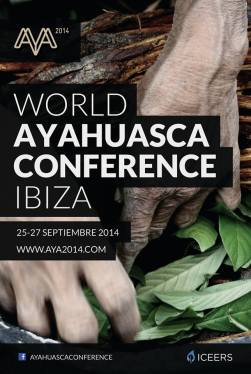


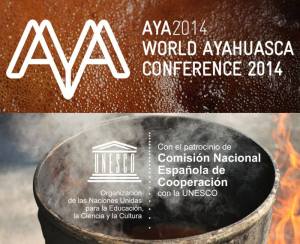
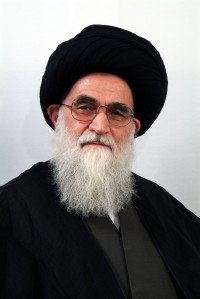
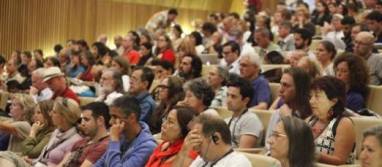
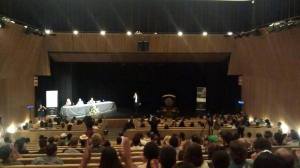



You need to be a member of 12160 Social Network to add comments!
Join 12160 Social Network